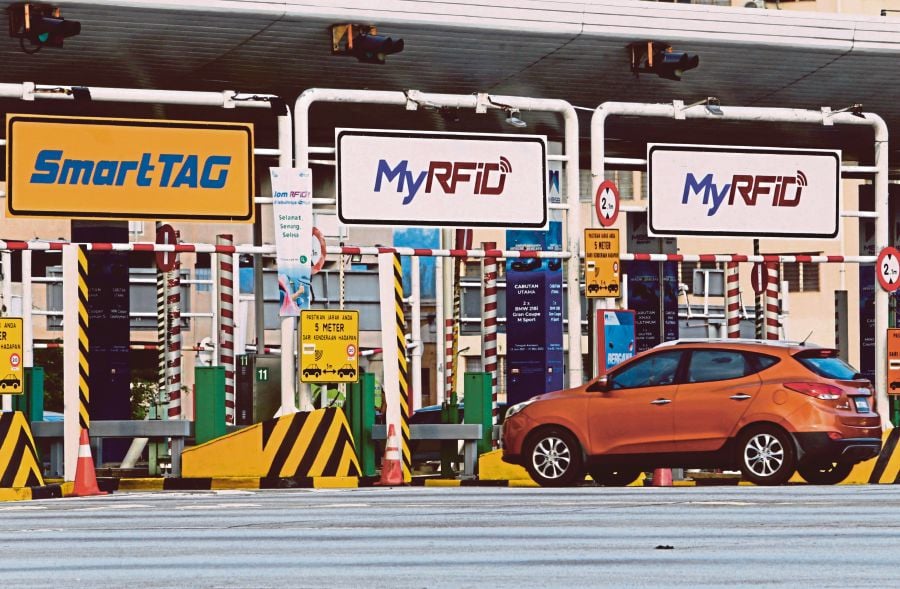RFID is often an easy enough acronym to pronounce, say those in the Radio Frequency Identification business. But to know its technological workings is rather arduous and a different kettle of fish.
I'm sure RFID was on many people's lips or minds this Raya holiday season with millions of vehicles on the road.
RFIDs are supposed to effect smoother traffic flows. Did they?
I encountered a snag at the Second Penang Bridge after entering the Jalan Duta toll without a hitch. I was told that the two plastic RFID strips at my left headlamp of my vehicle had "confused" the electronic RFID reader! Someone from the toll booth had to come to my rescue with something that looked like a credit card reader!
I fault the difference in the electronic readers at different highways. Some are huge like a mini tv and they give you a fair amount of confidence. But some have cameras similar to the size of mini digital cameras! I can't help thinking that they would have to strain themselves to the limit to capture the signals.
Ever since RFID tags for vehicles were introduced a number of years back on certain thoroughfares, feedback from motorists was low as not many were using the system because they preferred to use the then existing payment mechanisms.
But when it was introduced by a major toll operator using the RFID system devised by another company earlier this year, there was much debate in the media as well as in cyberspace.
Teething problems set in, prompting the operator to employ young and energetic customer service agents at toll plazas to help motorists overcome their fears or avoid potential pitfalls.
Somehow something wasn't right and I don't know why. But I do know that the purpose of a business is to create a customer who creates more customers. That's something that the RFID guys should take note in order to drive their business goals in the right direction.
Some companies do take the time to establish strong business goals, especially if they place integrity as one of their key aspirations as it's more than something that sounds attractive on a corporate website or marketing flyer.
Many companies promise that they have integrity but don't back it up through action. Therefore, it's said that if you open the door toward openness and transparency, a lot of people will follow you through.
When RFIDs first came on the scene some three or four years back, motorists could get them installed at shopping malls and petrol stations. Originally motorists were put off by the stringent requirement to show proof of ownership, a procedure that was eventually dispensed with.
I certainly like the convenience of having these RFID strips aligned to my credit card account because I won't run out of credit whenever I pass through a toll plaza. But the nightmarish snag has always been getting the signals from the strip to reach the reader so much so I've to do scenario planning each time I reach a toll plaza: Will I go through easily? Will I be stuck? Will I have to show off my reverse driving skills in a tight spot? Will I have to dangerously criss-cross to other payment systems?
I must say that I didn't have a problem passing through a gated community in Beranang, Selangor when the strip was attached to my car's headlamps by the management staff some four years ago. No glitches whatsoever.
When researching for this opinion piece, I was surprised that Malaysia had been hailed as the first country in the world to pioneer the installation of an RFID chip into our passports in 1998! Malaysia Boleh!
But a recent RFID experience floored me: I was asked to get RFID access to drive in and out of an apartment block in Cyberjaya. I was anticipating another round of affixing the RFID strip. But there was no need for that! I was told to just put the RFID card on the car's dashboard and I'll be able to pass through. Yes, it worked without a hitch!
Now, that got me thinking. That meant I could use a different vehicle to enter that building so long as I have the access card.
Again, that set me thinking further – why can't this be implemented on tolled highways? Well, well…entrepreneurs do bear in mind that people will soon forget what you said but they'll never forget how you made them feel.
* The writer is a former Bernama chief executive officer and editor-in-chief






